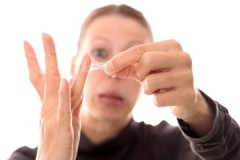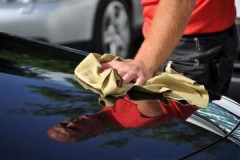Several proven ways to remove tar from the board
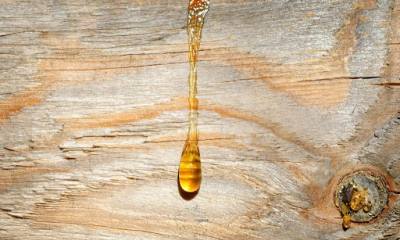 Wooden boards are a popular building and decorative material. But very often they have to be cleaned of resin.
Wooden boards are a popular building and decorative material. But very often they have to be cleaned of resin.
There are several effective ways to help you achieve the desired result. These include mechanical and chemical cleaning.
When choosing a suitable folk or professional remedy, all application rules and prohibitions should be followed.
For more information on how and how to remove resin from a wooden board (for example, pine), we will tell you in the article.
Content
Why clean up?
Natural resin protects the wood from many adverse factors. However, in the construction and operation of wooden structures, the adhesive brings a lot of trouble. Similar problems are caused by synthetic resin that gets on the boards during operation.
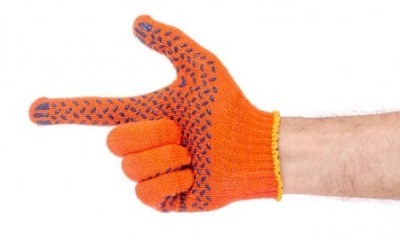 Any tar stains need to be removed for several reasons:
Any tar stains need to be removed for several reasons:
- resin is a sticky substance, various objects (tools, rags, clothes, materials) can stick to it;
- resinous areas darken over time - this spoils the general appearance of the wood covering;
- in the presence of stains and discharge, it is impossible to achieve a beautiful uniform varnishing or painting of the boards.
How to remove folk remedies?
Wood by its nature is an inert material, therefore, the resin can be removed from its surface using various improvised means. At home, it is not difficult to find liquids that dissolve adhesives.
Ammonia and acetone
To prepare a working solution, ammonia and acetone are mixed in a 2: 1 ratio. The process of removing the resin itself is as follows:
- Using a rag, apply the solution to the board.
- Rub in the product until foam appears.
- Leave the foamy mass for 20 minutes.
- Wipe the board with a clean, damp cloth.
Potash and soda
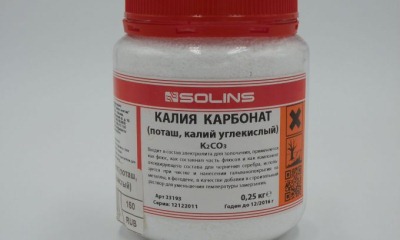 To make the necessary reagent, you need to take potash (potassium carbonate) and soda (sodium carbonate) in equal amounts (50 g each).
To make the necessary reagent, you need to take potash (potassium carbonate) and soda (sodium carbonate) in equal amounts (50 g each).
The mixture of powders is poured with a liter of hot water. With a ready-made hot solution, rub the areas stained with resin until they are completely cleaned.
It is more convenient to do this with soft or semi-hard brushes or sponges. Metal brushes are not suitable for alkali treatment. After cleaning, the surface is washed with water and dried.
To speed up the procedure, you can add 250 ml of acetone to the resulting volume of the cleaner.
Vinegar
It is possible to get rid of tarry deposits and stains not only with alkaline solutions, but also with weak acids. The easiest way to find acetic acid at home is.
To prepare a solvent, concentrated vinegar is diluted with water in a ratio of 1:50.
A rag, brush or coarse sponge is moistened in a vinegar solution and rubbed on the board until the surface is free of resin. Change the rag to a clean one as needed.
How to wipe with professional compounds?
To clean boards (for example, from pine) from resin, you can use ready-made solvents and special products. The most common options besides acetone are white spirit, alcohol, nitro solvent. You can also find chemicals in stores that are designed to remove tarry and sticky compounds.
To choose the right product, you need to pay attention to several points:
- the purpose of the liquid;
- health safety;
- cost;
- ease of use;
- cleaning efficiency.
White Spirit
This organic solvent is used to dilute:
- oil paints,
- alkyd enamels,
- varnishes,
- mastic.
It perfectly dissolves oils, fats, organic sulfur compounds. White spirit effectively removes tarry marks on wood surfaces.
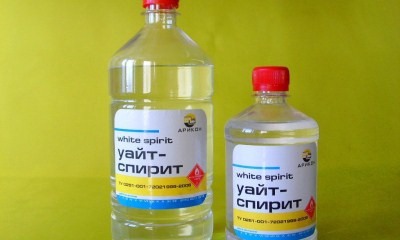 The average cost of a 0.9 liter bottle is 100 rubles. Algorithm for cleaning a wooden surface from resin includes several steps:
The average cost of a 0.9 liter bottle is 100 rubles. Algorithm for cleaning a wooden surface from resin includes several steps:
- Soak a cotton pad or rag in the solvent.
- Apply the product to the problem area.
- Wait a few minutes.
- Wipe the sticky bead from the edges to the center with a cloth.
Mellerud
Means for removing traces of glue. It can also be used to remove:
- resin,
- oil,
- I soot
- ink,
- lipstick.
The liquid is suitable for processing:
- wooden,
- glass,
- ceramic,
- polyvinyl chloride,
- textile surface.
The price of a bottle (250 ml) is around 520 rubles.
Cleaning the boards with Mellerud is carried out in this order:
- The solution is applied to the resin with a sponge or brush.
- Withstand for some time.
- Wipe the stain with a clean cloth.
Solvent
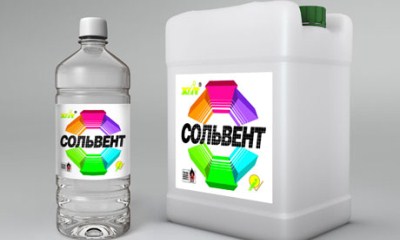 A universal nitro-solvent that applies when working with:
A universal nitro-solvent that applies when working with:
- varnishes,
- paints,
- enamels,
- bitumen,
- rubber,
- oils.
The price of a solvent depends on the volume of the container. A large five-liter canister costs an average of 460 rubles. A small 0.5 liter bottle can be bought for 55 rubles.
The technology for removing resin from boarding is identical to other solvents. The product is applied to the stains with a moistened brush and rag, after which the contaminant is wiped off.
Mechanical removal
To remove beads from the surface of the boards, you must first wait for them to harden. The congealed mass is removed with a sharp object... A knife, spatula, scalpel are suitable for this. When all drops are removed, the board is polished with sandpaper or a sander.
In some cases, it makes sense to drill out with a milling tool or cut out large resinous areas in the knot area with a knife. The resulting grooves are filled with putty or a wooden chopik is inserted into the glue. Then the board is sanded.
If localized lesions are left, in the future they will be a constant source of sticky droplets. The release of resin on softwood planks is enhanced by heating.
Features of cleaning before and after painting
A varnish-and-paint coating applied to a wooden surface does not stop the appearance of a new portion of resin on the wood. therefore demineralization is desirable before painting.
In this case, the chances of preserving the decorative coating are higher. You can clean untreated wood by any means, including solvents. Mechanical resin removal is also suitable. After processing, the boards must be sanded with a suitable grit sandpaper.
If the wood structure is already painted, the resin removal process becomes more difficult. This is due to the fact that many chemicals can damage decorative surfaces. In such a situation, it is recommended to use safe means.
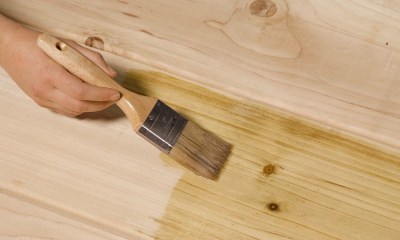 For example, the following composition is suitable:
For example, the following composition is suitable:
- liquid soap - 25 g;
- ammonia - 50 ml;
- water - 1 l.
Hot water is taken to dissolve the components. Cleaning is carried out while the liquid has cooled down. The emitted resin is removed with a rag dipped in a ready-made soap solution.
What not to do and why?
Removing the resin from the board is not difficult if the cleaners are used correctly. Before starting work, some taboos should be kept in mind.
Secondly, it is not recommended to paint or varnish the wood until the resin traces have been completely removed from it. This will lead to non-uniform staining and will require additional restoration work.
Additional Tips
With any method of resin removal it is advisable to remember and apply useful recommendations... They will help you achieve the desired result, preserve wood material and protect your health:
- When using ready-made solvents, you must wear personal protective equipment (gloves, respirator).
- Chemical cleaning should be carried out outdoors or in a well-ventilated area.
- If conditions permit, the boards should be exposed to high temperatures. Heating will accelerate the release of the resin from the wood and the problem will not recur in the future.
- In some cases, you can get rid of resin build-up on a wooden structure using a blowtorch.
For recipes and tips for removing tar from various surfaces, see this section.
Related videos
How to remove tar from the board, the video will tell you:
Conclusion
Removing resin from boards is a necessary measure when using wood-based material in residential construction. For cleaning use mechanical methods, folk remedies, ready-made chemistry.
The method of demineralization is chosen taking into account the presence of painting and the amount of resin.... If all the rules are followed carefully, it is not difficult to achieve a perfectly clean surface.


